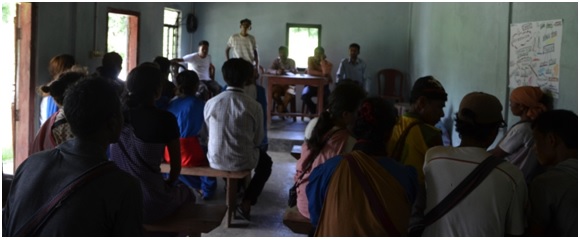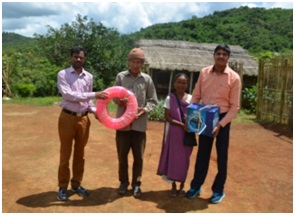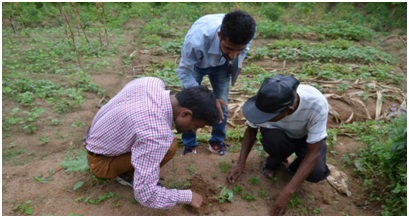Training programme on improved bun system of cultivation for income gereration and nutritional security
The crop and water productivity (WP) of monocropped rice in lowland areas of north-eastern region (NER) of India is lower than national average mainly due to cultivation of long duration variety, meagre use of fertilizer and manure and inefficient water management which needs to be addressed for sustaining food security. In subtropical NER, average annual rainfall is very high (around 2,000 mm). Drainage in valley lowlands is a major problem in this region during rainy season due to stagnation of incident water which cause irreverisble crop damage or may lead to crop failure. The hill and mountain topography of the region due to their vast expansion further aggravates the situation. Even in winter season, the water table in valley foot hills remains high mainly because of continuous seepage from surrounding hillocks and uplands. Root zone soils of these type of agricultural lowland farms remain over-saturated almost throughout the year. Therefore, especially in lowlands after harvest of kharif rice, it is impossible to grow arable crops such as vegetable/pulses due to their excess moisture. Secondly, as rice is not possible during winter due to its early onset of winter induces spikelet sterility. In this regard, the Division of Crop Production, ICAR Research Complex for NEH Region, Umiam conducted a one day training programme on the 30th August, 2018 at Mynsain village, Ri-Bhoi District, Meghalaya which ideally falls in lowland valley of surrounding hillocks. The major objective of the programme was “to increase cropping intensity and promotion of organic farming in the village and adjacent villages of Mynsain village which is one of the model villages adopted under the NPOF project. Altogether 20 interested farmers from the village attended the training programme.
In this programme, Dr. Jayanta Layek, Scientist (Agronomy) & PI (NPOF), explained about the need and importance of growing of second crop after rice and also on the rice buns. He emphasised that no-till technology (ideal resource conservation technology) and improved bun system (raised and sunken beds) are the best possible farm practices for growing of pulses and vegetables in water stagnated rice fallows. It is possible to diversify the existing single cropping system with rice–pea or rice–lentil in sunken beds and vegetables such as tomato– okra–broccoli, tomato–brinjal–broccoli, etc., on raised beds with effective land utilization. Dr. Sandip Patra, Scientist (Agricultural Entomology) explained about the important insect pests that possibly infest the vegetables and pulses and suggested control strategies for each crop that are suitable to organic farming. Dr. Utpal Dey explained that bun system with configuration for raised bed of 1 m width, 8–10 m long and 30–50 cm height of cultivation is very popular for growing crops like vegetables (tomato, cabbage, cauliflower, carrot, etc.), ginger, turmeric etc., especially in uplands. Adoptions of these kind of improved bun system of cultivation permanently with proper cropping sequence in rice lowlands of the NER of India will not only increase the production and productivity of vegetables and cereal crops but also enhance cropping intensity, employment, and income substantially.
After the programme, demonstration of line sowing of green gram was undertaken in one of the farmers’ field for better understanding and awareness of the farmers. At the end of the programme, essential inputs like seeds (green gram, french bean), organic pesticides, irrigation pump and pipe etc were distributed among the participated tribal farmers.


